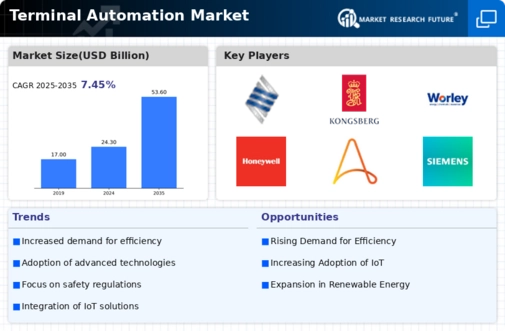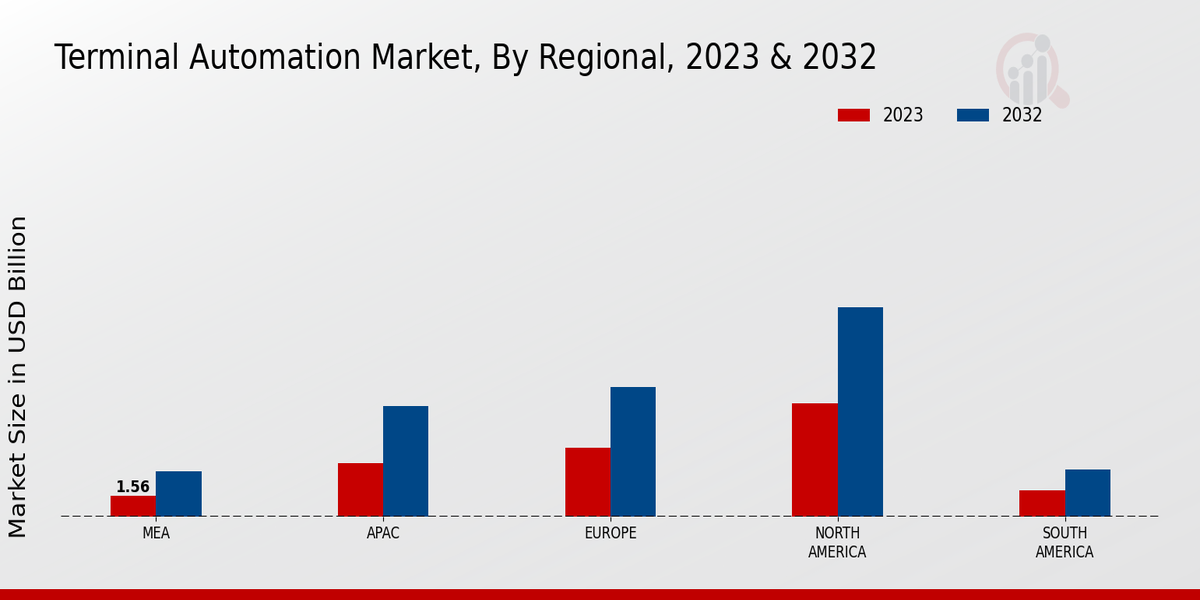The Terminal Automation Market is characterized by a dynamic competitive landscape where several key players strive to establish their dominance through innovative solutions and advanced technologies. The market is witnessing a considerable transformation driven by the need for increased operational efficiency, safety, and real-time data analytics across various terminal operations, including marine ports, oil and gas terminals, and logistics hubs. Factors such as growing global trade, technological advancements, and the increasing demand for automation in managing terminal operations are propelling market growth.
Companies are focusing on strategic partnerships, acquisitions, and developing comprehensive automation systems to enhance productivity and reduce operational costs, leading to a highly competitive arena where agility and innovation are crucial for sustained growth.
Emerson has made a significant mark in the Terminal Automation Market by leveraging its extensive experience and technological prowess. The company is recognized for its strong portfolio that includes advanced process automation solutions designed to optimize terminal operations. Emerson's systems are known for their reliability, scalability, and ability to integrate seamlessly with existing infrastructure, which enhances terminal performance while lowering operational risks. With a focus on providing state-of-the-art technology that supports real-time monitoring, data collection, and analytics, Emerson is able to address the evolving requirements of various sectors, ensuring efficient handling of logistics and storage.
Additionally, Emerson benefits from its established reputation in the industry and its extensive customer support services, which together enhance its market presence and competitiveness.
Kongsberg Gruppen stands out in the Terminal Automation Market with its commitment to innovation and operational excellence. The company is well-regarded for its cutting-edge automation technologies that cater to various segments within the terminal operations space, including maritime and logistics management. Kongsberg Gruppen emphasizes creating intelligent systems that provide comprehensive control over terminal activities, thus improving workflow efficiency and safety. The company invests significantly in research and development to pioneer solutions that align with the latest industry trends and regulatory requirements.
This helps Kongsberg Gruppen maintain a competitive edge by offering tailored solutions that meet the specific needs of its clients. The focus on sustainability and digital transformation further strengthens its position in the market, enabling it to attract a diverse clientele engaged in environmentally conscious terminal operations.















